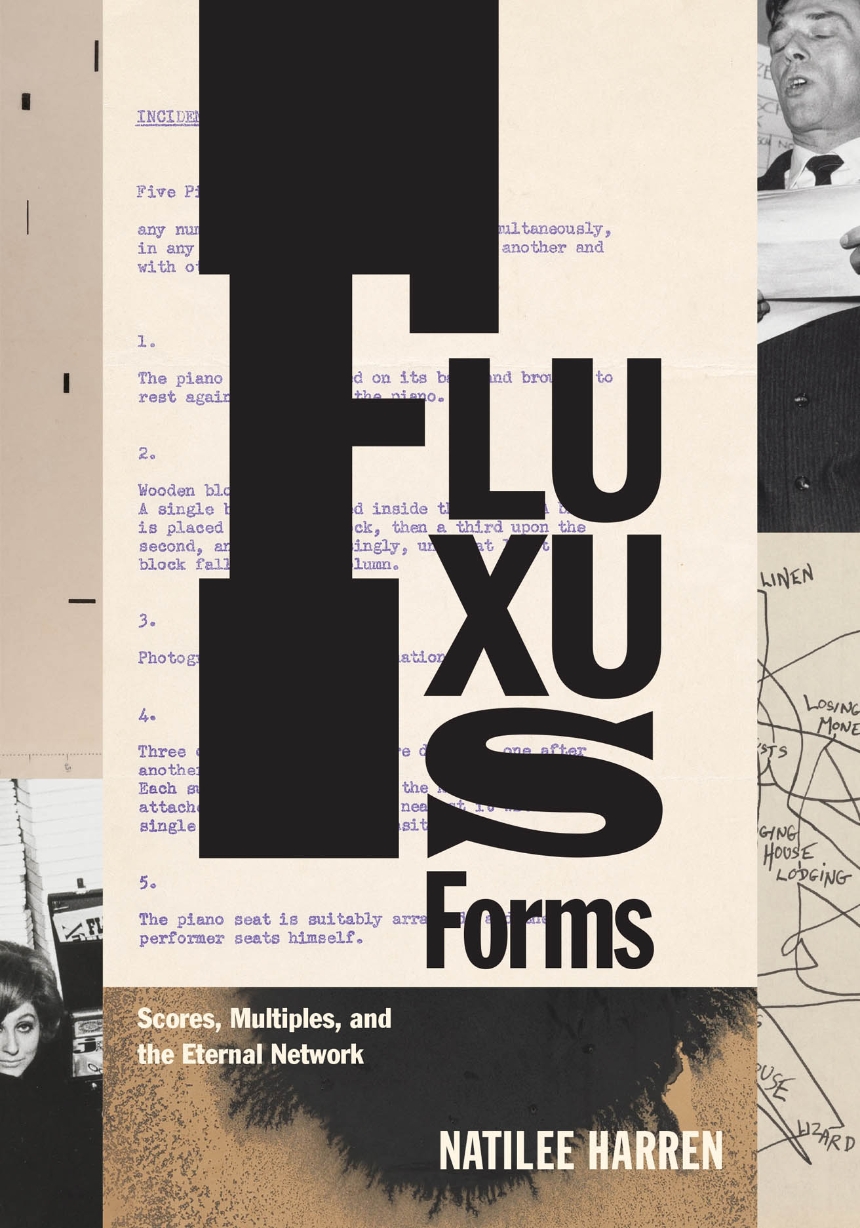Fluxus Forms
Scores, Multiples, and the Eternal Network
“PURGE the world of dead art, imitation, artificial art. . . . Promote living art, anti-art, promote NON ART REALITY to be grasped by all peoples,” writes artist George Maciunas in his Fluxus manifesto of 1963. Reacting against an elitist art world enthralled by modernist aesthetics, Fluxus encouraged playfulness, chance, irreverence, and viewer participation. The diverse collective—including George Brecht, Robert Filliou, Dick Higgins, Alison Knowles, George Maciunas, Yoko Ono, Nam June Paik, Benjamin Patterson, Takako Saito, Mieko Shiomi, Ben Vautier, and Robert Watts—embraced humble objects and everyday gestures as critical means of finding freedom and excitement beyond traditional forms of art-making.
While today the Fluxus collective is recognized for its radical neo-avant-garde works of performance, publishing, and relational art and its experimental, interdisciplinary approach, it was not taken seriously in its own time. With Fluxus Forms, Natilee Harren captures the magnetic energy of Fluxus activities and collaborations that emerged at the intersections of art, music, performance, and literature. The book offers insight into the nature of art in the 1960s as it traces the international development of the collective’s unique intermedia works—including event scores and Fluxbox multiples—that irreversibly expanded the boundaries of contemporary art.
While today the Fluxus collective is recognized for its radical neo-avant-garde works of performance, publishing, and relational art and its experimental, interdisciplinary approach, it was not taken seriously in its own time. With Fluxus Forms, Natilee Harren captures the magnetic energy of Fluxus activities and collaborations that emerged at the intersections of art, music, performance, and literature. The book offers insight into the nature of art in the 1960s as it traces the international development of the collective’s unique intermedia works—including event scores and Fluxbox multiples—that irreversibly expanded the boundaries of contemporary art.
304 pages | 12 color plates, 70 halftones | 7 x 10 | © 2020
Art: American Art, Art Criticism, Art--General Studies, European Art
Reviews
Table of Contents
Prelude: The Artwork in Flux
1: Diagramming Form, from Graphic Notation to the Fluxus Event Score
2: Of Drips, Diagrams, and Immanent Form: Fluxus in the Wake of Abstract Expressionist Painting
3: George Brecht and the Notational Object
4: George Maciunas, Fluxboxes, and the Transitional Commodity
5: Objects Without Object: Robert Filliou and the Unworking of Fluxus
Coda: The Fluxus Virtual, Actually
1: Diagramming Form, from Graphic Notation to the Fluxus Event Score
2: Of Drips, Diagrams, and Immanent Form: Fluxus in the Wake of Abstract Expressionist Painting
3: George Brecht and the Notational Object
4: George Maciunas, Fluxboxes, and the Transitional Commodity
5: Objects Without Object: Robert Filliou and the Unworking of Fluxus
Coda: The Fluxus Virtual, Actually
Acknowledgments
Notes
Index
Notes
Index
